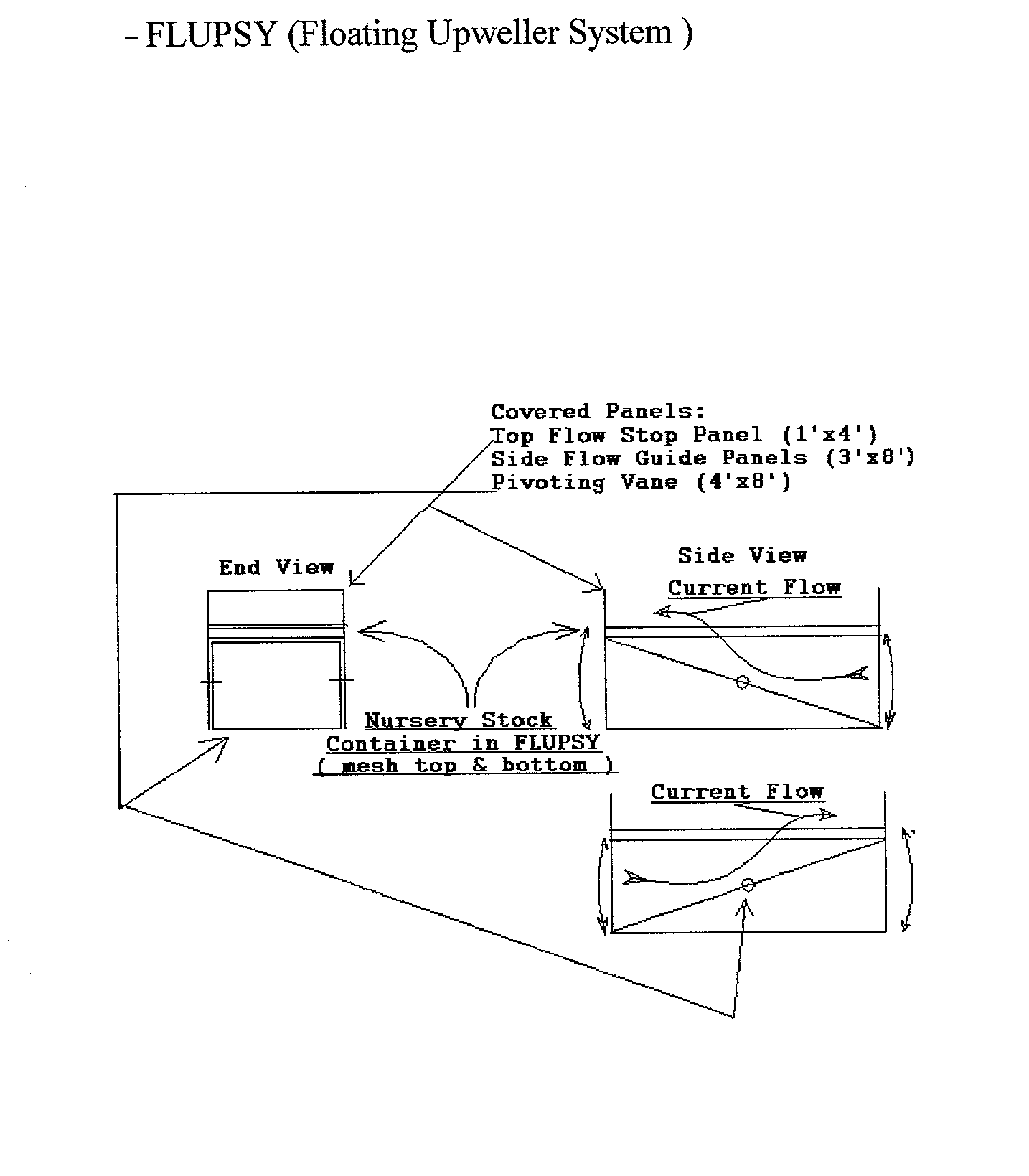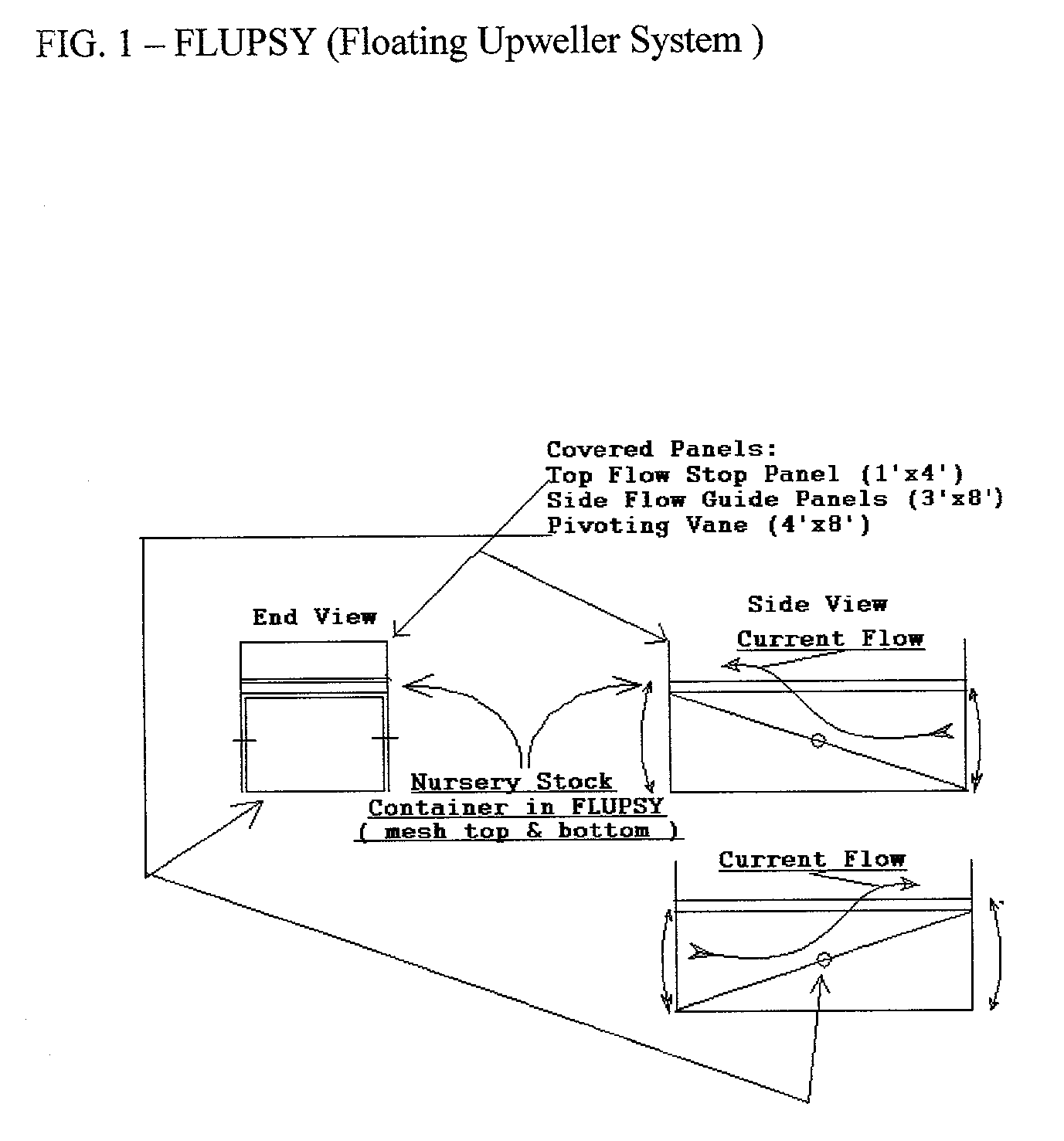Integrated system for shellfish production: encompassing hatchery, nursery, brood-stock conditioning and market conditioning phases; also water treatment, food supplement, propulsion, anchoring, security, and devices for the integration of neighborhood values and shellfish production.
a shellfish and integrated technology, applied in pisciculture, climate change adaptation, applications, etc., can solve the problems of inability to use tidal-powered baskets, and inability to meet the needs of shellfish production
- Summary
- Abstract
- Description
- Claims
- Application Information
AI Technical Summary
Benefits of technology
Problems solved by technology
Method used
Image
Examples
Embodiment Construction
--
[0075] Description of the Preferred Embodiment
[0076] While the present invention is described in connection with what is presently considered to be the most practical and preferred embodiments, it is to be understood that the invention is not limited to the disclosed embodiments, but is intended to cover the various modifications and equivalent arrangements included within the spirit and scope of the claims.
[0077] Some of the innovations in this system of inventions are incremental improvements that require a narrow context for their value to be realized. Other innovations in this system of 56 inventions are paradigm shifts and order of magnitude improvements in the art of shellfish culture.
[0078] Perhaps these claims define the future of the shellfish industry. If such is the case it I will see that the ownership of those claims is not an obstacle to the industry. In part, these claims define ways in which the shellfish industry can be reconciled and even allied with both the env...
PUM
 Login to View More
Login to View More Abstract
Description
Claims
Application Information
 Login to View More
Login to View More - R&D
- Intellectual Property
- Life Sciences
- Materials
- Tech Scout
- Unparalleled Data Quality
- Higher Quality Content
- 60% Fewer Hallucinations
Browse by: Latest US Patents, China's latest patents, Technical Efficacy Thesaurus, Application Domain, Technology Topic, Popular Technical Reports.
© 2025 PatSnap. All rights reserved.Legal|Privacy policy|Modern Slavery Act Transparency Statement|Sitemap|About US| Contact US: help@patsnap.com



